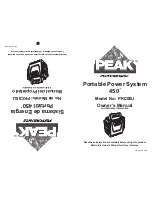
4-26
Driving on Snow or Ice
Most of the time, those places where your tires meet the
road probably have good traction.
However, if there is snow or ice between your tires and
the road, you can have a very slippery situation. You’ll
have a lot less traction or “grip” and will need to be
very careful.
What’s the worst time for this? “Wet ice.” Very cold
snow or ice can be slick and hard to drive on. But wet
ice can be even more trouble because it may offer the
least traction of all. You can get wet ice when it’s about
freezing (32
_F; 0_C) and freezing rain begins to fall.
Try to avoid driving on wet ice until salt and sand crews
can get there.
Whatever the condition
--
smooth ice, packed, blowing
or loose snow
--
drive with caution.
If you have traction control, keep the system on.
It will improve your ability to accelerate when driving on
a slippery road. But you can turn the traction control
system off if you ever need to. (You should turn the
system off if your vehicle ever gets stuck in sand, mud, ice
or snow. See “Rocking Your Vehicle” in the Index.) Even
though your vehicle has a traction control system, you’ll
want to slow down and adjust your driving to the road
conditions. See “Traction Control System” in the Index.
If you don’t have traction control, accelerate gently.
Try not to break the gentle traction. If you accelerate too
fast, the drive wheels will spin and polish the surface
under the tires even more.
Summary of Contents for 2000 Venture
Page 1: ......
Page 188: ...2 84 The Instrument Panel Your Information System...
Page 397: ...Scheduled Maintenance 7 7...
Page 398: ...Scheduled Maintenance 7 8...
Page 415: ...7 25 Maintenance Record DATE ODOMETER READING SERVICED BY MAINTENANCE PERFORMED...
Page 416: ...7 26 Maintenance Record DATE ODOMETER READING SERVICED BY MAINTENANCE PERFORMED...
















































